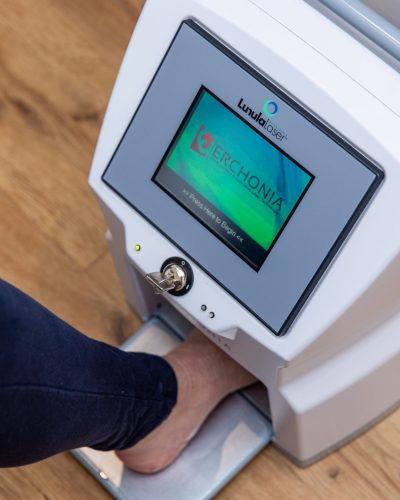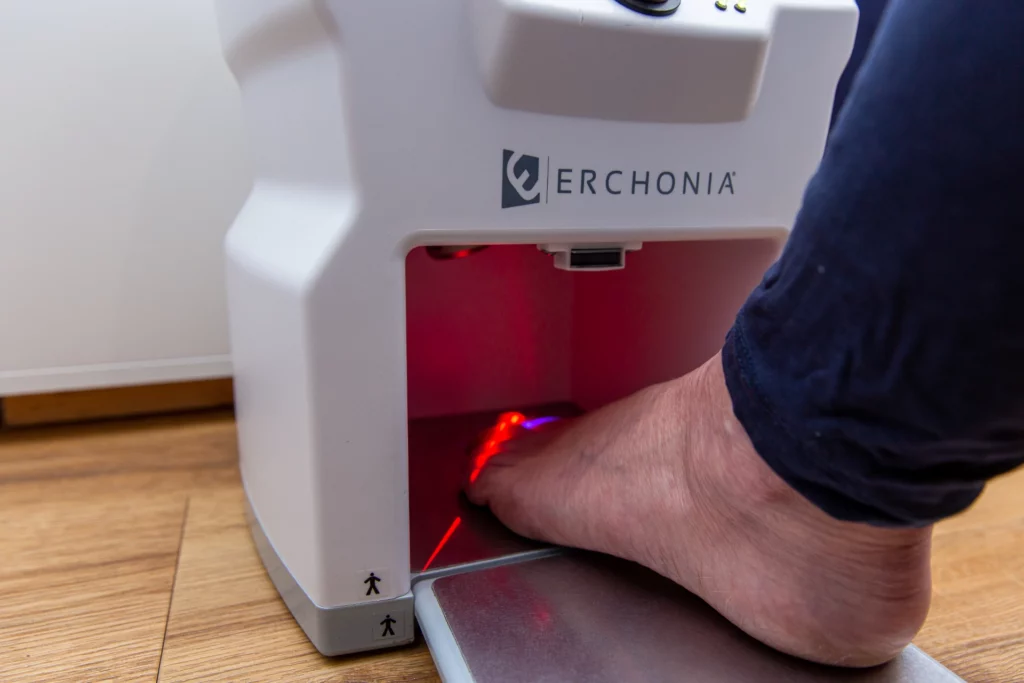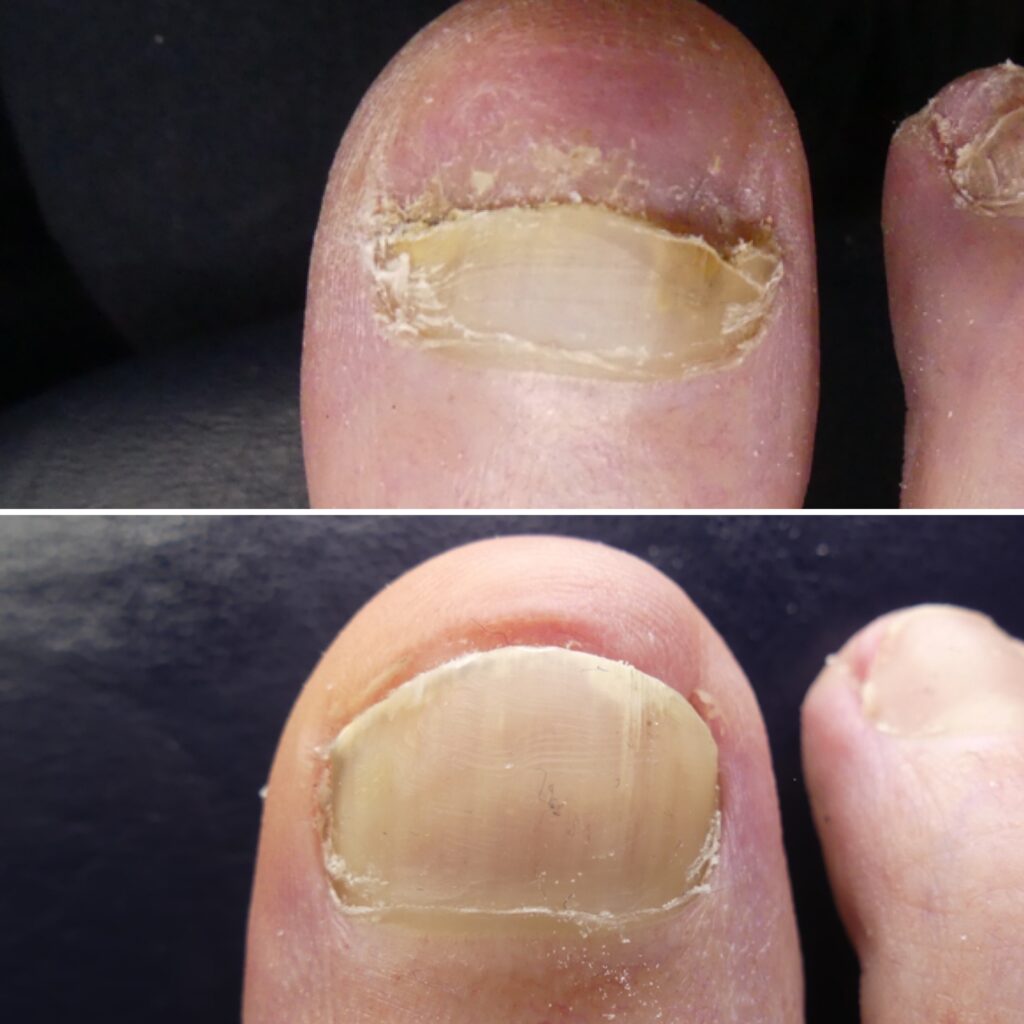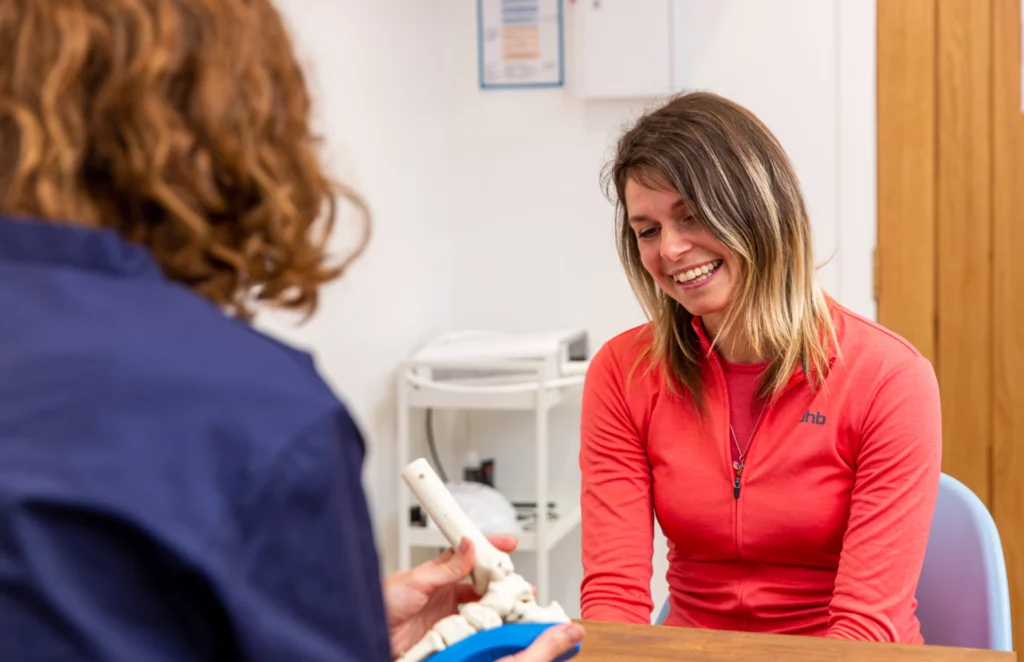
What are Fungal Nails?
Fungal nail infection is very common, affecting around 10% of people in the UK. It can affect both fingernails and toenails, but is more common in toenails due to the fantastic environment our shoes and socks provide; fungal infections thrive in a dark, moist and warm environment.
Fungal nails are discoloured (white, orange and/or brown), sometimes there can be black areas where bleeding has occurred under the damaged nail, or green where a secondary bacterial infection has occurred. Over time the nail can become brittle and/or crumble, it can lift away from the skin underneath and become loose. Sometimes debris collects beneath the nail and becomes malodorous.
How we Treat Fungal Nail Infection
We are well known for our use of the Lunula Laser in treating fungal infections, but Lunula is only one part of our comprehensive management plan for Fungal Nail infection. We attack stubborn fungus from every possible angle, leaving no stone unturned in our quest for success!
Lunula Laser
Our Lunula Laser® is painless and effective.
Fungal infection isn’t limited to the nail, it also lives in your skin and in the cells at the base of your nail. This means that topical anti-fungal treatments, (those which you paint on) are likely to have only a limited and temporary effect.
Lunula works from within your body to attack fungus from every angle. It promotes the production of your body’s natural anti-fungal agent; hydrogen peroxide and, also; nitric oxide, which increases the blood flow to your feet.
Lunula is safe, posing none of the risks and harmful side effects of oral anti-fungal medications. It typically takes only minutes to perform, with absolutely no recovery time required.
Lunula can be used on feet and hands and can also improve nails affected by psoriasis or damage. It is not destructive, as other lasers can be. Instead Lunula works by promoting your body’s natural defence mechanisms.


How does Lunula work?
The Lunula has two laser diodes (beams) which rotate and deliver energy to all exposed skin and nail cells. Photoreceptors in these cells convert this energy into two naturally occurring chemicals; hydrogen peroxide and nitric oxide. Hydrogen peroxide is a natural antiseptic and begins to breakdown any fungus in the area. Nitric oxide causes vaso-dilation, meaning it increases blood flow to the area, most significantly to the nail bed which is ordinarily poorly supplied. This increased blood supply helps the body to use its own immune system to fight fungus. It also aids in the regeneration of damaged tissue to enable the affected nail and skin to heal. Lunula is the only treatment available which both eliminates fungus and heals damage.
If you’re particularly keen on understanding the science behind Lunula Laser, you can learn more from the manufacturer Erchonia by clicking here.
Other Treatments
We aren’t content to sit back and let Lunula do all the work! And we don’t take chances that fungus could continue to live on the surface of the nail. We regularly burr thick nails and physically remove fungal loads.
We also provide you with the appropriate topical treatment for your nails and skin, so that any Athletes Foot infection is dealt with early on.
Last, but not least, we give you a whole truck-load of advice about reducing the risk of re-infection, by guiding you in how to manage your footwear and home environment.



